How Content & PR Can Power LinkedIn Lead Gen Post-2020 Update
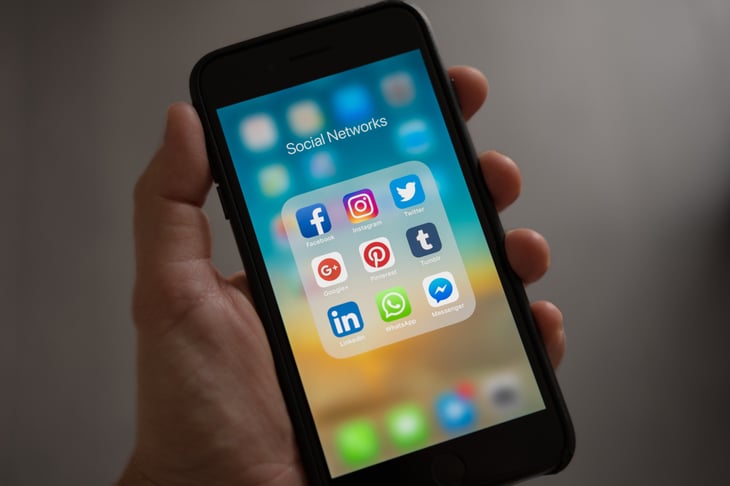
LinkedIn’s September 2020 algorithm update and redesign included several changes that happened years ago on other social channels: greater prominence for ads and promoted posts and less visibility for organic content from businesses.
Individual users are now less likely to see the updates your business posts, which means existing LinkedIn lead gen strategies won’t be as successful as they were a few weeks ago.
The good news: LinkedIn is still a great channel for driving leads, as long as you’re focusing on the right things and realistic about what kinds of results to expect.
Even better? Your existing content and PR efforts can help power your new LinkedIn strategy.
Here’s a little background on what changed, a high-level overview of three ways to increase your LinkedIn reach, and tips on how existing content and PR efforts can facilitate the process.
The 2020 LinkedIn Update: What Changed
On September 24, LinkedIn unveiled a new look that coincided with an update to its algorithm. (If you’re interested, this summary of past updates by Tim Queen is excellent.) Like earlier updates, the most recent one changed which types of content and posts get priority in members’ timelines.
Here’s a high-level summary of the changes:
- It’s now much harder for organic (i.e., unpaid) posts to get big reach. In most cases, organic updates will only be visible to a brand’s (or person’s) first-degree connections.
- To get significant reach (with second- and third-degree connections), a post has to have a lot of quality engagement. This means not just likes but in-depth comments, comment threads, and shares with comments.
- If an organic post is performing well enough, it triggers a manual review by a LinkedIn editor to ensure that it’s actually good enough to show to second- and third-degree connections. If an editor deems the post is not of high-enough quality, they prevent it from being shown to other members.
- External URLs (like a link to a company blog) get lower priority and limited organic reach.
- LinkedIn-generated content gets high priority. LinkedIn editors write news-inspired pieces featuring commentary from LinkedIn members. People who are featured enjoy excellent exposure.
- Paid ads get top priority in members’ timelines. The easiest way to make sure your content has significant reach on LinkedIn now is to pay to promote it.
 LinkedIn's News articles appear in the right-hand sidebar of a user's home page.
LinkedIn's News articles appear in the right-hand sidebar of a user's home page.
The bottom line: it’s now harder for businesses to get a large audience for organic, unpaid posts.
This is probably frustrating to most marketers, but it shouldn’t be surprising. As I mentioned earlier, other social media platforms prioritized ads and promoted posts years ago to boost revenue streams.
And as with other social platforms, LinkedIn can still be a great way to generate leads – but you’ll need a new strategy for making sure your content is seen by potential leads.
What will work given the latest update? Three key tactics:
- Grow your network.
- Be really active on LinkedIn.
- Double down on promoted posts.
Here’s a look at how each of these can help your LinkedIn lead gen and how your existing content and PR efforts can power all three.
1: Grow Your Network, Grow Your Reach
Because organic posts now have a much harder time reaching anyone beyond first-degree connections, one simple way to boost visibility of your posts is to grow your first-degree connections.
What does that look like?
- For business pages: increasing the number of people who follow your page
- For employees within a business: connecting with more people
Startups should aim to do both.
Start by encouraging employees (especially thought leaders) within your business to proactively connect on LinkedIn with everyone they meet in real life (or via Zoom events, interviews, email, etc.).
When possible, include a personal note with invitations to connect: “Just watched your webinar on digitizing the loan origination process. Great stuff! Looking forward to seeing more of your insights.”
![]()
Hit the blue "connect" button to connect with anyone you've had a real-life interaction with.
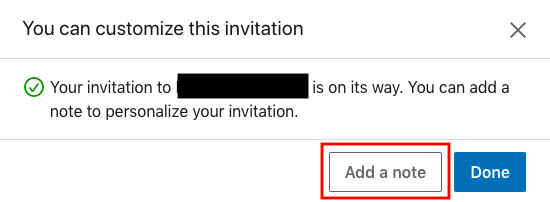 Click "add a note" to make sure you're laying the groundwork for meaningful relationships.
Click "add a note" to make sure you're laying the groundwork for meaningful relationships.
Starting every connection with a note helps lay the foundation for real, meaningful relationships. This is key for success.
Then focus on growing your business’s follower base.
Here’s how your existing content and PR efforts can help you both strengthen existing relationships and increase your follower count:
- Fuel a “follow us” campaign: Why should people follow your business? Make a compelling case by sharing your best content and most relevant media coverage. This will probably work best as a series of paid campaigns targeted at the various groups you want as followers (potential customers, employees, partners, investors, etc.). Customize each with content or PR wins most likely to appeal to each group. Note: be sure to understand that the ROI of this type of campaign will come down the road, as overall engagement increases.
- Give your team an excuse to reach out: When you’re regularly publishing new content, you’re giving your team an excuse to contact members of their network to deepen their relationships. Your CEO, for example, might DM a blog post to a connection: “We were inspired to write this after reading your interview in Forbes about innovation in tough times – I hope you enjoy it!” Over time, these small interactions become mutually beneficial relationships.
- Pull connections into relevant conversations: A blog is a great excuse to interview people in your network about your industry, feature their commentary, and tag them on LinkedIn as part of your promotion. Bonus: when members of your network are included in your content, they’re much more likely to comment on and share your posts, which helps increase your content’s reach.
Over time, the network of people who follow your business and are actively engaged with its employees will grow, meaning more people will see your organic posts, meaning you’ll have a bigger universe of potential leads.
2: Be Really Active on LinkedIn
The second way to boost lead gen efforts on the new LinkedIn is to spend a lot of time engaging on the platform, either from your business page or the pages of key thought leaders within your business.
Engaging more often can work for three reasons:
- More chances for your connections to see your name, which keeps you top of mind
- More chances to convey key messaging, which can help nudge prospects toward conversion
- More chances for LinkedIn editors to see your commentary, include it in LinkedIn content, and therefore expose it to a much larger audience.
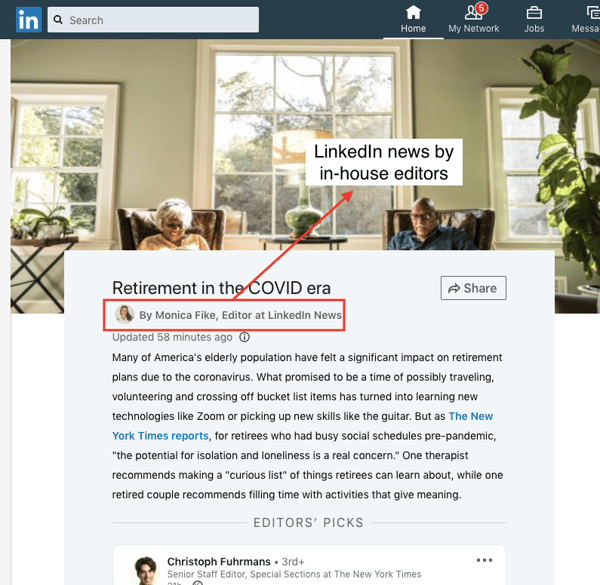
LinkedIn news pieces have commentary on current events...
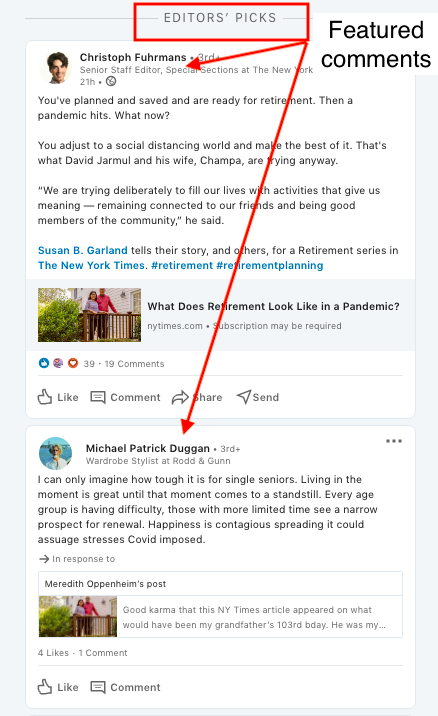
... and feature posts with related commentary from LinkedIn members.
The catch: being active enough to make these things happen on LinkedIn (or any social platform) takes a lot of work. It requires daily activity in the form of posting, engaging with others’ posts, and commenting on current events.
It could well be a full-time job.
The good news, again, is that an existing content or PR program can make the job easier. Here’s how:
- Ready-made news commentary: Content like a blog requires a business to produce ongoing commentary relevant to their industry, customers, or brand, which means many blogs engage with current events. Startups can pull and modify this content as commentary for various thought leaders to post on LinkedIn. Tip: for each blog post, ask your content team to draft LinkedIn-ready snippets to help thought leaders promote them. Thought leaders can then simply copy / paste (or slightly tweak) the snippets rather than taking the time to craft their own.
- Compelling pull quotes: To encourage engagement with your posts, it’s essential to give people a reason to engage. That means including a compelling insight or pull-quote from every piece you post. Again, have your content team highlight these lines in the content they produce so creating compelling posts is simple. Note: be sure your pull quote is 140 characters or less so it doesn't get cut off.
- Engagement roadmap: Not sure who to follow or whose posts to comment on? Turn to your content, which should cite external studies, quote experts, and link to related articles in other publications. Encourage engagement with your posts by strategically tagging some of these external players.
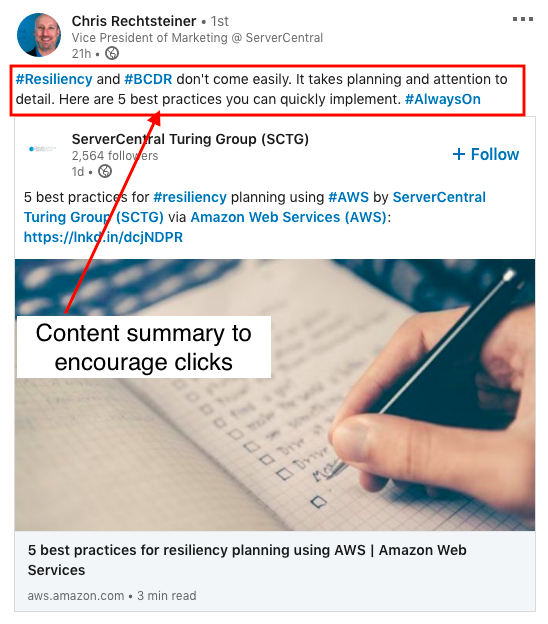
Give readers a reason to click with a pull quote of140 characters or less.
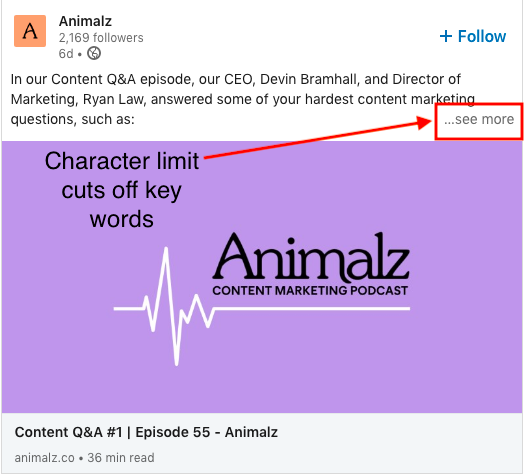 Pull quotes get cut off after about 140 characters, which can hide your CTA!
Pull quotes get cut off after about 140 characters, which can hide your CTA!
The reality for many small teams is that being extremely active on LinkedIn (or any social channel) isn’t a top priority. That’s fine. Even modest increases in activity, paired with network-growing efforts, can help increase your content’s reach and therefore boost your lead gen efforts.
In most cases, though, these efforts will be most successful when supported with strategic paid campaigns.
3: Double Down on Promoted Posts
By “double down,” I don’t mean “immediately double your LinkedIn ad budget.”
I mean renew your commitment to making paid promoted posts work. The reality of ads getting top priority won’t go away anytime soon. Social media platforms need to make money, and ad revenue is their most efficient way of doing that.
Again, existing content and PR can help:
- Promote successful blog posts: Your best-performing blog posts resonate for a reason. Get them in front of even more people who will find them interesting via promoted posts. Note: before doing this, be sure the post you’re promoting offers a clear CTA to nudge visitors from LinkedIn toward conversion.
- Promote PR placements – not only blogs or landing pages – to boost credibility. Third-party validation of your brand can be compelling for potential customers, employees, partners, and investors. To make sure you can track performance, send clicks to a page on your site that prominently links to the placement.
Want more inspiration? Find out how one Chicago marketer used LinkedIn to get prospects to call him.
The LinkedIn Algorithm Has Changed, but People on LinkedIn Haven’t
LinkedIn has always been a great place for B2B brands to connect with potential clients, employees, investors, and partners.
While the algorithm update means that organic posts will have a smaller reach, it doesn’t change the reality that nurturing meaningful relationships is one of the best ways to generate qualified leads for your business.
By focusing LinkedIn activities on establishing and deepening those relationships, startups can enjoy continued ROI from the channel. Existing content and PR can support those efforts by sparking and fueling the conversations that, bit by bit, help people to get to know, like, and trust each other.







